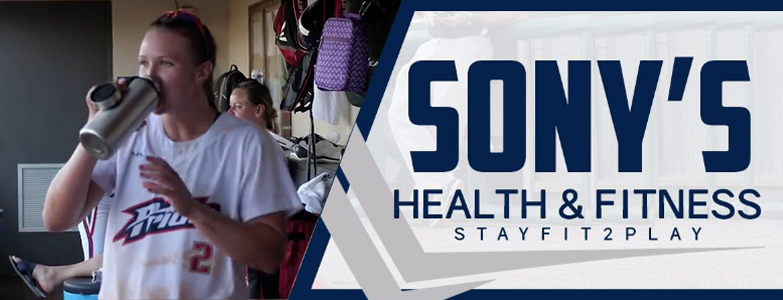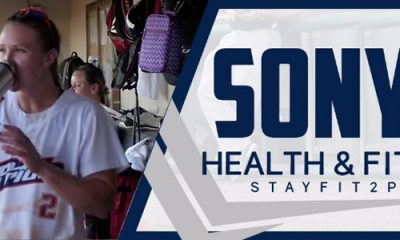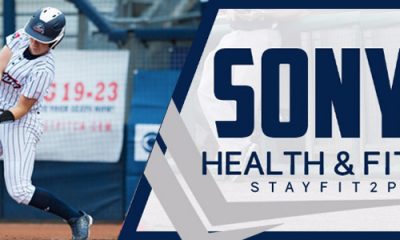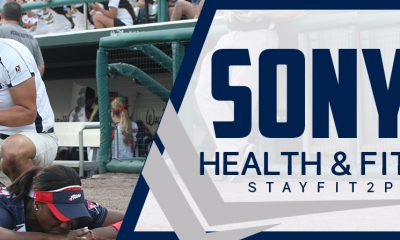
Viera, FL– October 13, 2017- Athletes are always looking for the next best thing to keep their bodies running smoothly and efficiently. There are so many products out on the market these days that are geared toward young athletes and athletes in general that promote increased recovery by enhanced hydration. As consumers, we don’t always read the ingredients and correlate that to what we need from the product.
First and foremost, when it comes to proper hydration water is the absolute necessity, especially when we know our bodies are composed of 50-70% water. The problem with athletes compared to an average person is that they are losing a great deal of electrolytes that are not always easily replenished with just water alone. The importance of electrolyte replenishment is essential in muscular contraction and nerve conduction. The second thing that is important in replenishment drinks are carbohydrates that can be converted into sugar for energy.
Here are the differences between two of the most popular sports drinks out there, and popular natural alternative such as Coconut water.
|
PowerAde (8 fl oz) |
Gatorade (8 fl oz) |
Harmless Harvest 100% Raw Coconut water (8 fl oz) |
|
70 calories |
50 Cal |
56 Cal |
|
0g Fat |
0g Fat |
0g Fat |
|
30mg Potassium |
30mg Potassium |
514mg Potassium |
|
55mg Sodium |
110mg Sodium |
4mg Sodium |
|
19mg Carbohydrates |
14g Carbohydrates |
14g Carbohydrates |
|
15g Sugar |
14g Sugar |
12g Sugar |
|
0g Protein |
0g Protein |
0g Protein |
|
10% Vitamin B6 |
0% Vitamin A |
6% Magnesium |
|
10% Vitamin B12 |
0% Vitamin C |
4% Vitamin C |
|
Niacin 10% |
0% Iron |
4% Calcium |
If you had to select one over the other just based on the facts, Gatorade may replace sodium losses more effectively than PowerAde due to its increased content with fewer calories. However, if the natural route is more appealing Coconut water can be an option for electrolyte replacement as well for those that are sodium sensitive. With regards to most coconut water brands it is even more prudent to read the label and its contents. For example, Harmless Harvest ‘s 100% Raw Coconut Water is one of the few companies that lists its’ ingredients as: 100% raw coconut unlike other brands where content is less than 1% coconut water and the remainder natural fruit sugar water. Harmless Harvests still maintains a high amount of Potassium and moderate levels of sodium as compared to PowerAde and Gatorade. The problem with this natural alternative may be in a slight cost increase as compared to its counterparts.
The question of how much sports drink should your athletes consume all depends on the environment and the demands of the sport. Any environment that is humid or hot will increase the amount of water loss through sweating. Also the less acclimatized your athlete is to these extreme heat environments the more sodium they will loose compared to an athlete that is accustomed to such temperatures.
The amount of time and demand of the sport will also dictate how much water and sports drinks should be consumed. A cross-country runner may have more of a demand for electrolyte replacement on hot day compared to a softball player hitting indoors. Any length of time over 45 minutes where athletes are performing a vigorous activity should dictate the use of some sports drinks that include Carbohydrates to help replenish glycogen levels for energy as well as electrolytes. A good reminder to your athlete is to balance their water and sports drinks intake by interchanging each fluid during every hydration break in order to prevent having a bloated or upset stomach.
Also, knowing how much your athlete sweats overall will help determine how much fluid needs to be replenished overall. A good method for tracking fluid loss is by performing a weigh in first thing in the morning followed by a repeat weigh in following activity. Any deficit you track in pounds gives you an idea how much fluid needs to be replaced which can be thought of as 3 cups of water for every pound loss through activity. One to two cups of Sports drinks or coconut water can be rotated to help water retention and electrolyte replenishment.
Here are some general quick facts in amounts of Total fluids athletes should intake:
|
Everyday |
Children 4-8 (5 cup/day), Boys 9-13 ( 8cups/day), Girls 9-13 (7 cups/day), Boys 14-18 (11 cups/day), and Girls 14-18 (8 cups/day) (Institute of Medicine 2005) |
|
2-3 Hours before training/ competition |
17-20 oz. of fluid |
|
Immediately prior to training / competition |
7-10 oz. of fluid |
|
Every 15-20 minutes during training/competition |
6-12 oz. of fluid |
|
Exercise lasting longer than 1 hour |
Consume some carbohydrate drink around 30-60 grams per hour or a 8 oz. of sports drink |
|
Post Exercise |
For every lb. lost from training replenish with 24 oz. of fluid which is roughly 3 cups |
In conclusion most athletes are going to need to maintain their hydration levels on a daily basis, meaning if you wait for the “thirst” then the need to drink water its probably too late. Recommendations are to maintain a constant amount of fluid intake throughout daily life and maintain those amounts during rigorous activity. Recently, sports drinks have been criticized for their nutritional value but when they are used appropriately with a sufficient water intake their benefits will delay fatigue, replenish electrolytes, and prevent hyponatremia or over hydration. In a society where life has become more sedentary there should be concern in what parents are giving their younger athletes and restricting certain amounts sugar loaded beverages. However, take the time to read the labels, encourage water first, and select replenishment products based on athlete’s activity demand and environment.
Sources
Casa, D.J., Arstrong, L.E., Hillman, S.K., Montain, S.J., Reiff, R.V., Rich, B.S.E., Roberts, W.O., & Stone, J.A. National Athletic Trainers’ Association Position Statement: Fluid Replacement for Athletes. Journal of Athletic Training. 2000;35(2):212-224.
Angamuthu, K. The Role of Sports Drinks in Athletes: A Review. International Journal of Engineering Research and Science Technology. 2017;6(2):
Campbell, S. Dietary Reference Intakes: Water, Potassium, Sodium, Chloride, and Sulfate. Clinical Nutrition Insite. 2004;30(6)1.
Institute of Medicine. (2005). Dietary reference intakes for water, potassium, sodium, chloride, and sulfate. Washington, D.C.: The National Academies Press. Accessed on October 2, 2017. http://www.nal.usda.gov/fnic/DRI/DRI_Water/water_full_report.pdf
Swawa, M.N, Periard, J.D., & Racinais, S. Heath Acclimatization To Improve Athletic Performance in Warm-Hot Environments. Sports Science Exchange. 2015;153(28)1-6.
About USSSA Florida Pride:
The USSSA Florida Pride is a professional franchise in the National Pro Fastpitch League that is owned and operated by USSSA. The amateur organization of USSSA has multi-sport coverage and encompasses teams and players from the United States and abroad.
About NPF:
National Pro Fastpitch is headquartered in Nashville, TN. The league, created to give elite female fastpitch players the opportunity to pursue a professional career in their chosen sport, has operated since 1997 under the names of Women’s Pro Fastpitch (WPF) and Women’s Pro Softball League (WPSL). NPF is the Official Development Partner of Major League Baseball in the category of women’s fastpitch softball since 2002.
About USSSA:
USSSA is headquartered in Brevard County, Florida. USSSA is the World’s Largest Multi-sport Athletic Organization. Founded in 1968, USSSA has grown to over 3.7 million participants, competing in 13 nationally sanctioned sports including Baseball, Fastpitch, Slow Pitch, Karate, Basketball, Soccer and more! For more information on USSSA and to register your team visit USSSA.com.












You must be logged in to post a comment Login